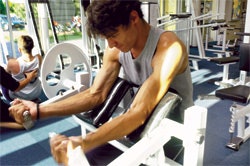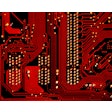
When compared to its often electronics-controlled, moving-parts-intensive cardio counterparts, strength equipment is relatively maintenance-free. According to Jon Stevens, president of Treadmill Doctor in Memphis, Tenn., repairs to strength equipment typically constitute less than 8 percent of all commercial fitness center repair expenditures, according to the company's internal repair-operations and parts-sales tracking systems. Treadmill repairs, on the other hand, consume roughly 73 percent of the maintenance budget.
Still, the importance of properly functioning strength equipment to the success of any given fitness operation cannot be completely dismissed. After all, an "out of order" sign looks just as bad on a butterfly machine as on a treadmill. And diligent maintenance of strength equipment has other, more tangible benefits. In 1995, a patron successfully sued a Louisiana health club when the curl machine he was using malfunctioned, causing the lifting bar to hit him in the face and injure his nose. An engineering expert testified that the equipment failure could have been caused by normal wear and tear, improper lubrication and/or improper use of the machine (banging of weights). Meanwhile, the facility owner testified that the machine had been cleaned that day, and that the nuts and bolts had been checked a day earlier. "The testimony of the owner of the facility about the cleaning and maintenance of the machine probably played a role in the rather small verdict awarded by the jury," which amounted to $5,000, according to attorney David Herbert, writing in the March 1999 issue of Facility Management.
Most facility operators consider the daily cleaning of strength equipment to be the first priority in an effective maintenance program. Additional inspection of each machine should take place at least once a week. "An inspection only means walking the floor and looking at the machines," says Steve Klein, president of The A Team, a maintenance service provider in Rockville, Md. "We're not talking about removing covers, because if you're going to remove the cover, you may as well service it." Adds Armstrong, "Sit down and make sure it works right. Follow the cables and belts to make sure they're not frayed."
Cables should be replaced immediately upon signs that their plastic coating has been compromised. While the machine may still function properly with exposed cables, the resulting metal-on-plastic friction will prematurely wear the machine's pulley wheels.
Many club owners lubricate a strength machine's guide rods to promote smooth movement of weight stacks and to protect the plastic bushings in each plate. Only lubricant specified by the equipment manufacturer should be used, however. "In most clubs, people spray silicone on the guide rods, but that actually damages them," Stevens says. "Silicone has a positive electrical charge, so it actually attracts dust, which has a negative charge, to the guide rods. The sliding motion will chip and pit that chrome plating and make it harder to move." Stevens recommends wiping down guide rods daily with a dry cloth, and replacing them every three years.
Nonetheless, Klein considers lubrication essential to multiple parts of most strength equipment. Areas that need regular attention are seat-adjustment pins, seat hinges and frame tubes on which seats must slide. The same type of lubricant should be used on a given machine for every application, otherwise it may become gummy or acidic, according to Klein. Care must also be taken around lubricated areas during the cleaning process. "Never spray the equipment with cleaning solution. Spray the towel first, then wipe the equipment down," Klein says. "If you get cleaning product on areas that require lubrication, you've now contaminated the lubricant."
Proactive fitness center operators should also educate users as to proper cleaning and care of strength machines. That includes removal of weight belts during seated exercises to avoid wear on upholstery, as well as controlled movement throughout an exercise to prevent damage to weight stacks. Klein recommends revisiting usage protocols with patrons as often as necessary during the first six months of their membership. "Show them once, let them go through and do their thing, and then come back and show them again until they get it," he says.
By introducing such components as Kevlar belting and marine-grade vinyl upholstery, today's strength equipment manufacturers continue to offer products that are both easy to use and maintain. For facility operators, says Stevens, "more affordable maintenance on strength equipment starts with the initial purchase."
Still, Klein warns buyers against viewing strength equipment's track record of reliability-or equipment warranties-as security blankets. While most strength equipment will function without any problem during its warranty period, diligent maintenance of the equipment from day one will keep it in top shape well beyond the warranty expiration. "People buy equipment and say, 'We don't need to get it serviced. It's under warranty.' Well, let's say nothing breaks, there's no warranty left, and the club has not been taking care of its equipment. Now everything starts breaking down, because they didn't take care of it when they should have. The warranty's done, and it's going to cost them a fortune. We see it happen often. Facility operators should get on a preventive maintenance schedule right away."





































